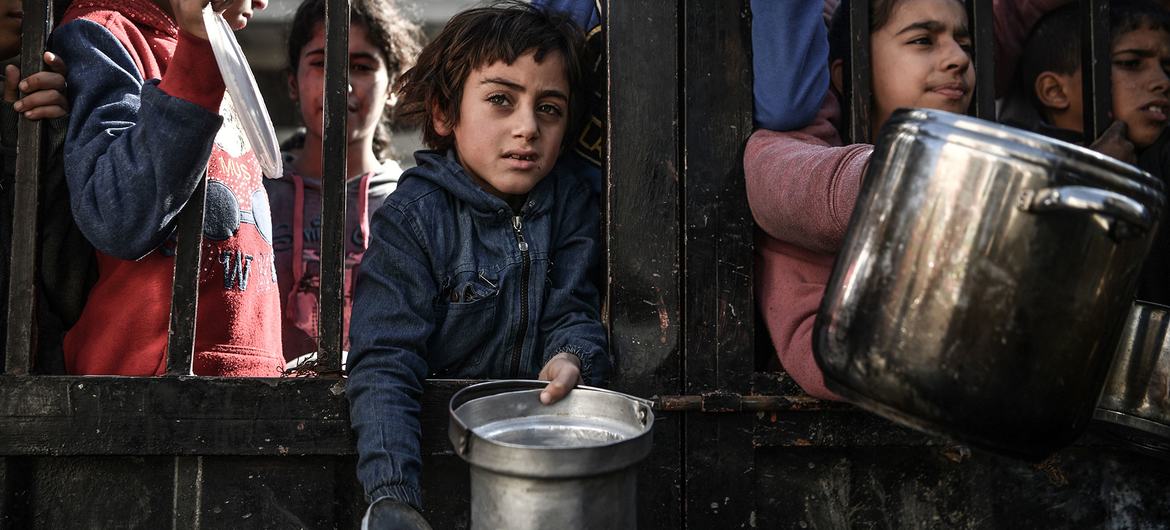
DiYES International School – Gaza is enduring one of the darkest humanitarian crises in modern history as hunger continues to claim lives. According to the Gaza Health Ministry, the total number of deaths linked to malnutrition has reached 404 people, including 141 children. Within just 24 hours, five more individuals perished, underscoring the severity of the situation. The blockade has cut off consistent food and medical aid, worsening the already dire conditions for civilians. International agencies warn that unless urgent measures are taken, the toll will escalate further. Gaza now stands as a painful example of how conflict and political decisions directly inflict suffering on the most vulnerable populations, with children bearing the heaviest burden of this tragedy.
The month of August 2025 saw a record 185 deaths in Gaza caused by hunger, the highest figure since the blockade intensified in March of the same year. More than 43,000 toddlers and over 55,000 pregnant and breastfeeding women are suffering from malnutrition, highlighting the scale of the crisis. The United Nations World Food Programme confirmed for the first time in August that Gaza has entered a famine-level emergency. The Integrated Food Security Phase Classification system categorizes food insecurity into five phases, with phase 5 representing catastrophe. Gaza has now reached this critical stage, a grim milestone that illustrates the collapse of basic survival systems under siege conditions. For countless families, finding food has become a daily battle with little hope in sight.
“Read about: Nepal in Chaos! How ‘Nepo Kids’ Sparked Gen Z Rage and Deadly Protests”
The situation in Gaza has been analyzed by international institutions that measure famine severity, and findings paint a devastating picture. By the end of September, it is projected that more than 640,000 people across Palestinian territories will be at phase 5 famine conditions. This classification highlights extreme scarcity where death from hunger becomes inevitable. The refusal of Israel to cooperate with the United Nations Relief and Works Agency further worsens humanitarian operations. UNRWA had for decades been the main distributor of aid for Palestinians, but its centers have been closed. In their place, four distribution hubs run by the Gaza Humanitarian Fund with support from the United States and Israel now function, though critics argue they lack the capacity to meet widespread needs.
Reports from Gaza authorities describe disturbing incidents where Israeli forces opened fire on civilians waiting for humanitarian aid. Such actions create fear among already starving residents and discourage many from seeking assistance. Hundreds of UNRWA distribution centers that once formed the backbone of relief work are no longer operational. Their closure has stripped Gaza of a trusted network built over decades. The replacement centers, while present, cannot replicate the extensive coverage once available. Hunger is not simply a matter of supply but also of access, and with aid queues targeted, the act of surviving becomes dangerous. For families in Gaza, even receiving food aid now carries risks that no civilian should ever face.
“Read more: From Doha to All of Qatar: Why Everyone Trusts RIB for Ultimate Security”
As hunger worsens across Gaza, the world faces urgent pressure to act. Humanitarian groups warn the crisis exceeds past conflicts. The Gaza Health Ministry reports fatalities climbing daily without relief. Aid groups demand restoration of distribution networks and secure civilian access. Without those efforts, deaths in Gaza will increase further. Children make up many victims, showing vulnerability and resilience amid hardship. Gaza now symbolizes humanitarian collapse rooted in political disputes and blockades. The world watches closely, but interventions remain small compared to massive suffering.
This article is sourced from www.antaranews.com and for more details you can read at diyesinternational.com
Writer: Sarah Azhari
Editor: Anisa